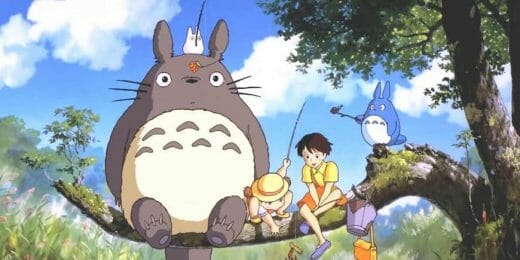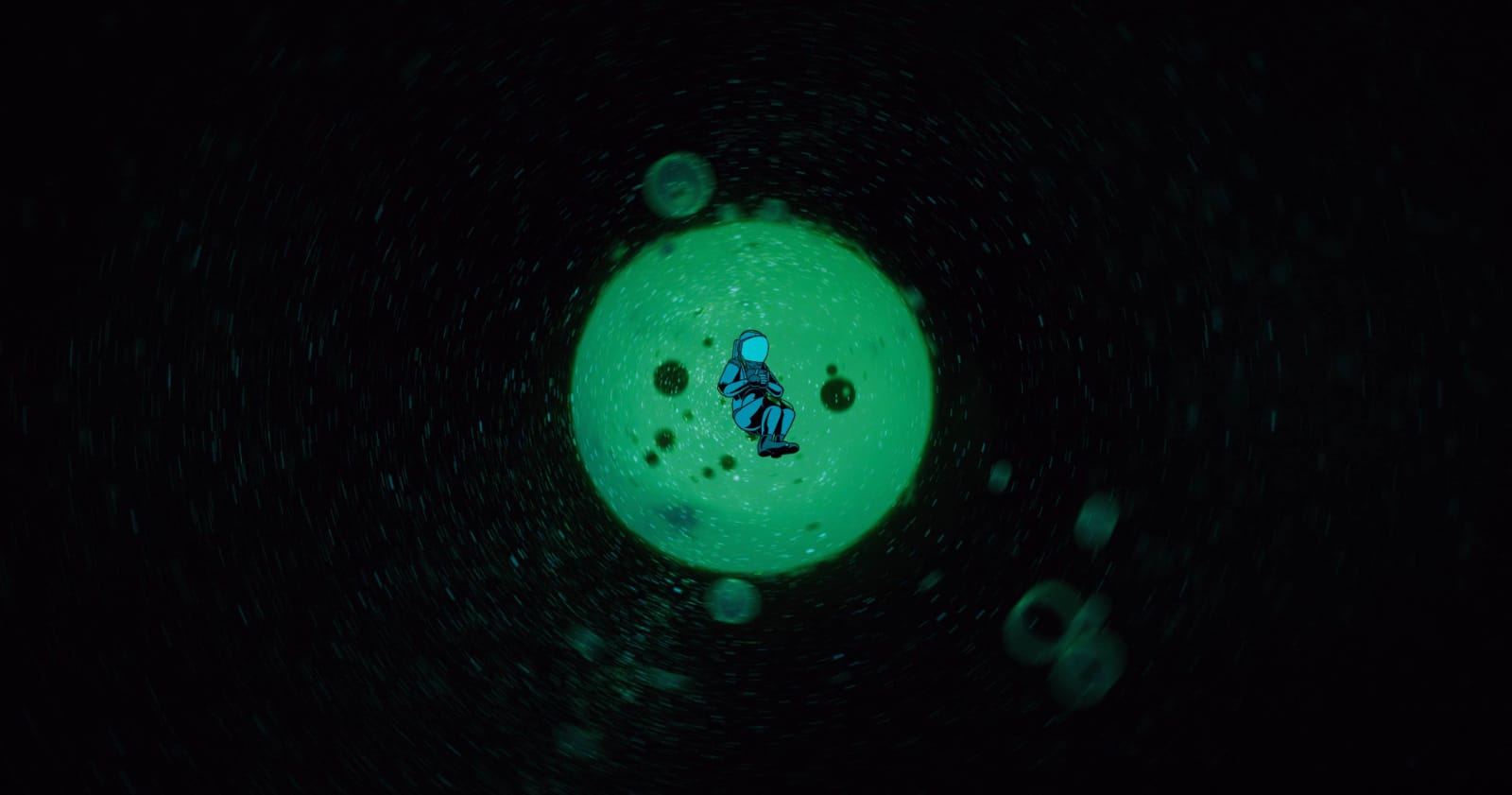
Drifter is a stylish, space-faring short film from Joost Jansen, a talented Belgian animator, art director and director. Joost imagines a world where space travel has become commonplace, where the populace live out a humdrum existence working manual labor and service jobs throughout its vast expanse. Among these souls is the Drifter who, while going about his work, is cut adrift in “an ocean of stars.” The potent and poignant concept is rendered beautifully and given a soul of its own by Joost drawing in Toon Boom Harmony.
The film takes cues from material as varied as Solaris by Stanislav Lem, Mind Games by Masaaki Yuas, the works of René Magritte, as well as Jansen’s own experience. Joost shares what some of those inspirations mean to him and the project during an interview. Speaking with Toon Boom Animation, he opens a door into the world he created along with some of the tools and techniques that helped him with his vision. He also shares how sound design plays a significant part in Drifter, which features a fittingly spaced-out soundtrack from Exhaust Drone – one that was made into a limited release vinyl record as part of the project.
In our full interview below, we hear more about this one-of-a-kind project in Joost’s own words. He shares insight into his signature hand-drawn frame-by-frame style and blended live action footage of liquid, describing a process that will fascinate fans of mixed-media animation. Watch the trailer for Drifter and read on…
Please introduce yourself and your background as an artist for our viewers…
Joost: Growing up with a fascination for comics and an unconditional urge to draw, choosing art school was an obvious choice, in 2007 I graduated as an animation filmmaker. After some wanderings at studios, I set myself up as an independent filmmaker so that I could further develop my typical organic 2D style. Since then I continue to move as a freelancer for both commercial and artistic projects.
From my modest studio in the heart of Brussels, I currently work mainly as a freelance art director and director. The common thread in these various projects is my organi,c handmade visual style. Besides working on commission, I also make my own films. For example, A Battle of Peace, I Love Hooligans and Yves were internationally acclaimed and currently my science-fiction film Drifter is traveling the world.
Please give a brief summary of your new project, Drifter…
Joost: Planet Earth, a timeless future. As a child, Drifter dreamt of becoming an astronaut and now, as an adult, it seems he has made his dream come true. Every day, he shuttles back and forth between earth and space to carry out his daily tasks. Together with many others, in the rhythm of the great stream, he has become a prisoner of the mantra of construction, of the constant compelling demand for more and better.
One day disaster strikes. Drifter becomes detached from his station and is launched into deep-space. Kept alive by a mysterious green liquid, an amniotic fluid for deep-space disasters, Drifter embarks on an endless drift throughout the universe. At first, he is petrified. The universe is vast and overwhelming. But gradually, Drifter resigns himself to his fate. Far away from his daily routine, his view of everything and himself changes. With no other choice, he lets go of things in order to continue his drift full of wonder. Freed from time and space, Drifter is confronted with the void. When the futility of his existence forces him to leave behind dead weight, impending illusions are broken.
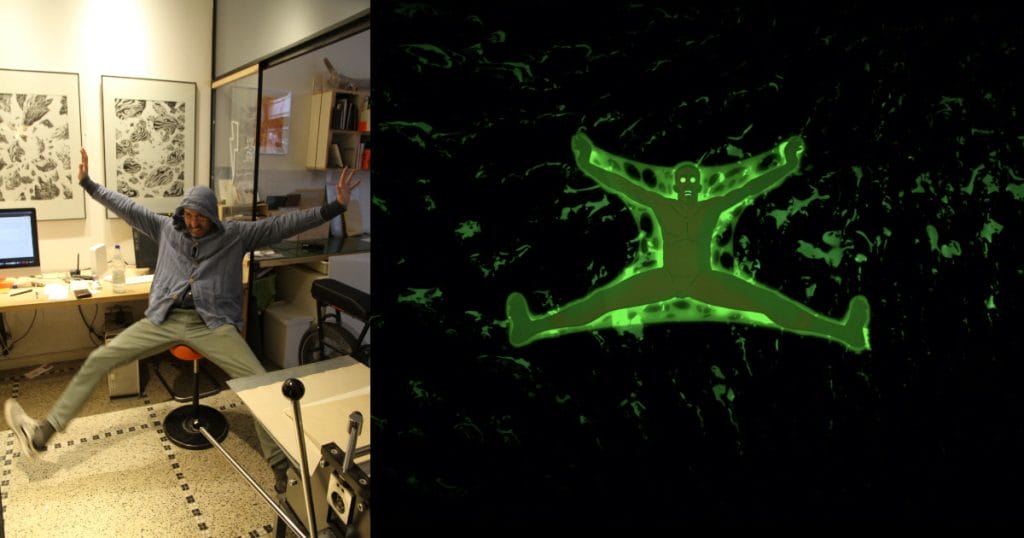
Who were the key team members on the project with you?
Joost: Seven years ago I started developing the Drifter project with Producer Steven Dhoedt at Visual Antics. Steven was thus my partner from beginning to end, both productionally and creatively. He co-wrote the script and offered a resonance in creative choices. We had to go a long way to get the budget for the production together, without Steven the Drifter project would not have happened.
During the development we also immediately worked intensively with the musicians of Exhaust Drone; who already made the first lines of the soundtrack for the animatic and teaser. This typical synth sound – ambient music was very important for the Drifter trip. These two collaborations came to light even more at the release of the Drifter vinyl, where we processed the soundtrack into several authentic tracks.

What are some of the inspirations behind the film?
Joost: The book Solaris by Stanislav Lem laid a certain foundation for the Film, the way the clouds of the planet embody the inner world of the people who are on the planet was the start for the Drifter script. All of the universe of Drifter can actually be seen as the embodiment of the inner-world of the main character.
Stylistically and animation-wise, Mind Games by Masaaki Yuas was an inexhaustible source of inspiration, both in terms of mixing media as in the dynamic hand-drawn animation. In Brussels I move among the works of René Magritte and landmarks of the graphic novelist Francois Schuiten, this surreal landscape certainly forms a kind of base from which Drifter has grown.
Can you introduce us to the character we see in Drifter and how you designed them?
Joost: The man in my story is a kind of satellite worker, a space worker who has to travel a huge distance to get to his job. Astronauts used to have great prestige, but in Drifter’s world, Space travel has become very common. It is the middle-class who work there. The work outside the atmosphere may not be very trivial but it is still ordinary executive tasks without any shine. I see the space worker as a symbol of today’s careerist, also a commuter who travels great distances daily to conform to the image of who and what he should be in our prestige society.
The Drifter character thus symbolizes a large group of people in our society, so we wanted to give him a universal design without too many distinct sides, a uniform character that blends in with the masses. The large round eyes show his drive and are a clear gateway to his soul. The character’s space-suit is functional but also functions as symbolic armor to protect himself from a harsh world, a kind of second skin that is needed to function and survive but that also hinders the character from moving freely. The spacesuit is then additionally filled with the magical liquid XILM-7, to make all this fit we had to pay quite some attention to the model sheets.
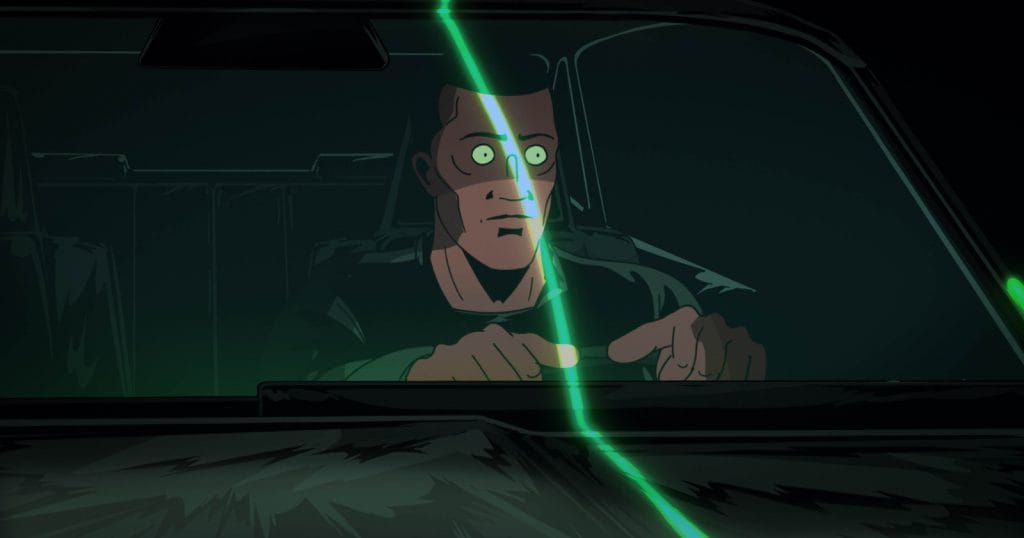
How would you describe your style of animation in the film?
Joost: We created our own visual style for Drifter, which was built from hand-drawn frame to frame animations combined with live-action shots of fluids. The visual style is very human/tactile with a retro feel. I would call it a handmade hybrid style with strong comic and anime influences.
What techniques or tools within Toon Boom Harmony proved useful on this project?
Joost: For Drifter, we deliberately chose to go back to basics, the technical possibilities in Harmony are almost endless but with drifter we chose to stay with the human feel of cell animation. Nevertheless, Harmony was an obvious choice here — the drawing tools are better and more dynamic than other software packages.
The fact that you work vectorially makes sure you can work very fast and clean and if necessary you can switch to bitmap/pixels, the fact that you have the choice between these two shows that TB is complete and well thought out.
Added to this there are some tools like the cutter tool for example, which can really speed up production. That you can combine these drawing capabilities with bones and a composting structure is just great.
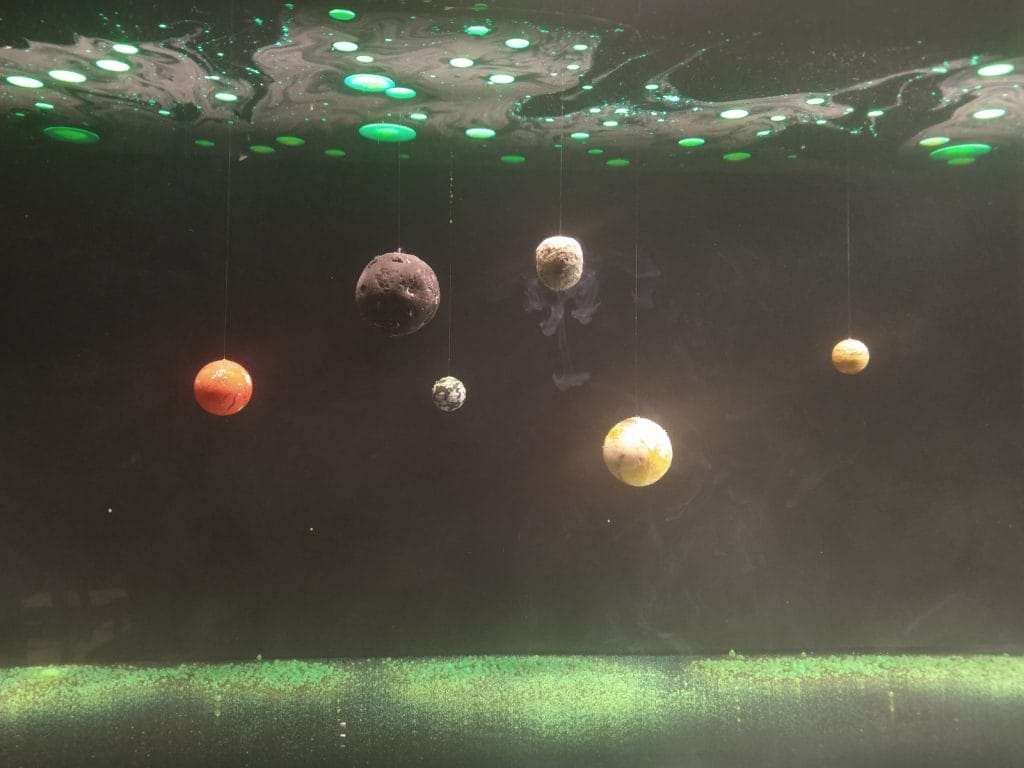
How were the hallucinatory space sequences created?
Joost: With a crew of five we shot fluids recorded in aquariums. Those images were mixed with the drawings. It was hard to find the right balance because it quickly becomes distracting when it’s obvious that something is from a different technique. I wanted to create one visual language.
For the special visual character of the film, it had to be special that those two worlds, of animation and live-action, come together. It refers a little bit to older science fiction films. The whole movie has a retro feel to it, it was never my intention to make a new space movie. The visual effects are kind of linked to lava lamp effects, to something from the past.
For five days we conducted experiments with oil-based liquids that dissolve in water creating certain visual effects. The liquid that really captivated me was a luminous, toxic liquid used for break lights and glow sticks. We used macro lenses for this; I was looking for spectacular images.
I was concerned with the scaling that also plays a significant role in the story: the rain contrasted with the starburst. By working with macro lenses you can turn a drop into a universe.”
What were the unique challenges from the production of Drifter? How were they overcome?
Joost: The process of filmmaking takes a very long time, the nastiest challenge for such projects for me is that it remains enjoyable. The development and finding the budget can take a long time and then you end up in a production that takes at least a year.
I myself prefer towork with a small group of people that know and trust so that everyone can work creatively in their own way. I want to create myself and not manage teams. If such a project can proceed in a friendly manner and not become too industrial it is more likely to remain fun for me throughout the way.
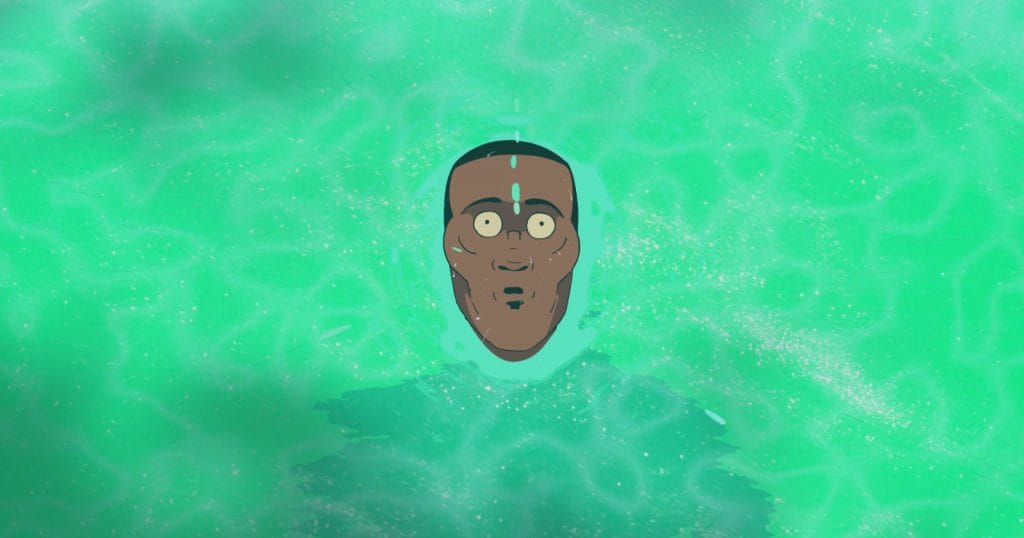
Is there a message or lesson you hope audiences will take away from Drifter?
Joost: I find it interesting to look at the space genre and use it to reflect on being human in our everyday lives. Drifter is about what is the place of a human being in our contemporary world. Drifter is mostly metaphorical but then again you have to show a world that is believable.
Drifter tells the story of a rebirth after a mental crisis and is actually based on a personal Experience. When I was 25 I lost my father after he was hit by a severe depression so I had the urge to do something around the theme of mental well-being but wanted to avoid telling a melancholic story at all costs, the whole thing has translated into the warm and hopeful story of Drifter.
Any final words of advice for aspiring animators?
Joost: Try to connect your creative making in some way with your immediate environment and find pleasure in the making itself. A work shows it when the creator had fun and to me that is most precious both for the creator and for the work.
- Interested in seeing Drifter for yourself? The film is available to stream online at a pay-as-you-want rate at drifterthemovie.com.
- Ready to start your indie animated film? Artists can download a 21-day trial of Harmony Premium.


